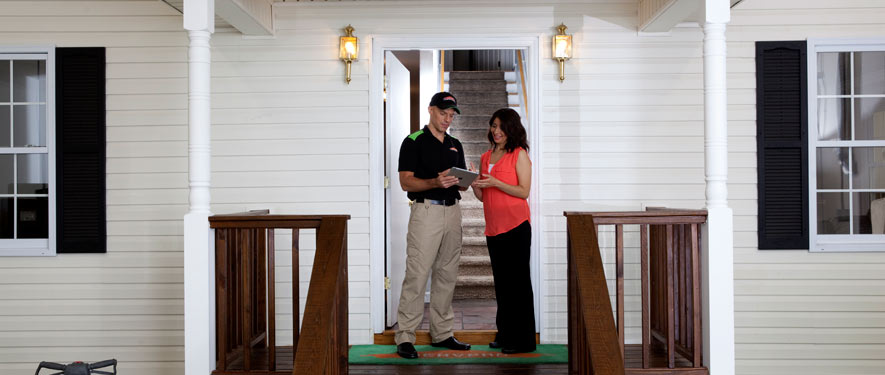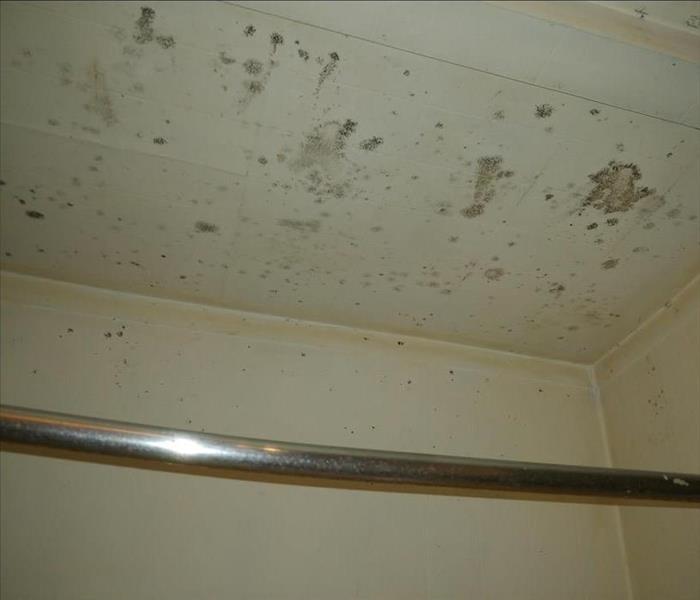
What Is Black Mould?
If you’ve heard about mould being a “silent killer” or about a dangerous “toxic mould” it’s likely they were talking about black mould. This can set off alarm bells for many people which leads to both panic and confusion. However, there’s no need to worry. We’ll tell you more about types of mould as well as what to do when you encounter it.
The first rule you need to know before we go on is that any mould, of any type, should not be disturbed. Trying to spray chemicals on it or wipe it up can actually spread the spores and make it worse. If you can see mould or you suspect it due to the odour, call us right away.
Black mould comes from the fungus Stachybotrys chartarum. It usually appears in the form of black/dark green spots or areas on porous materials such as drywall, paper, fabric/linen, or fiberboard. This type of fungus thrives on moisture so it typically grows in areas that have had previous water damage, excessive humidity, or are exposed to water like from a leaky pipe.
The source of the water or moisture must be remedied first before cleanup and restoration can begin. If you suspect any type of mould at all, whether it’s black mold or not, call the experts at SERVPRO of Peterborough at 705-761-7216. If you’ve experienced any type of water damage, mould growth can begin within just 48 hours.
Learn more about mould and what to do until help arrives by visiting Mould Damage Tips.
How Do I Tell If It’s Black Mould?
Since many types of mould can cause reactions, you should contact us regardless of the colour or type of mould. In many instances, multiple types of mould may exist in the same house or structure. If you suspect you have a mould problem, contact SERVPRO of Peterborough immediately.
If You See Signs of Mould, Call Us Today – (705) 761-7216
Understanding Mould
When water intrudes into your property, mould growth can start in as little as 48 hours. Consider the following mould facts:
- Mould is present almost everywhere, indoors and outdoors.
- Mould spores are microscopic, float along in the air, and may enter your home through windows, doors, or AC/heating systems or even hitch a ride indoors on your clothing or a pet.
- Mould spores thrive on moisture. Mould spores can quickly grow into colonies when exposed to water. These colonies may produce allergens and irritants.
- Before mould remediation can begin, any sources of water or moisture must be addressed. Otherwise the mould may return.
- Mould often produces a strong, musty odour, and that odour can lead you to possible mould problem areas.
- Even higher-than-normal indoor humidity can support mould growth. Keep indoor humidity below 45 percent.
Locally Owned Company with National Resources
SERVPRO of Peterborough is locally owned and operated—so we live and work here too and are proud to be part of this community. We are also part of a national network of over 2,200 Franchises with special Disaster Recovery Teams placed strategically throughout the country to respond to large-scale disasters.
We are proud to serve our local communities:
- Kawartha Lakes
- Peterborough County
- Northumberland County
- Regional Municipality of Durham
- Township of Havelock-Belmont-Methuen






 24/7 Emergency Service
24/7 Emergency Service



